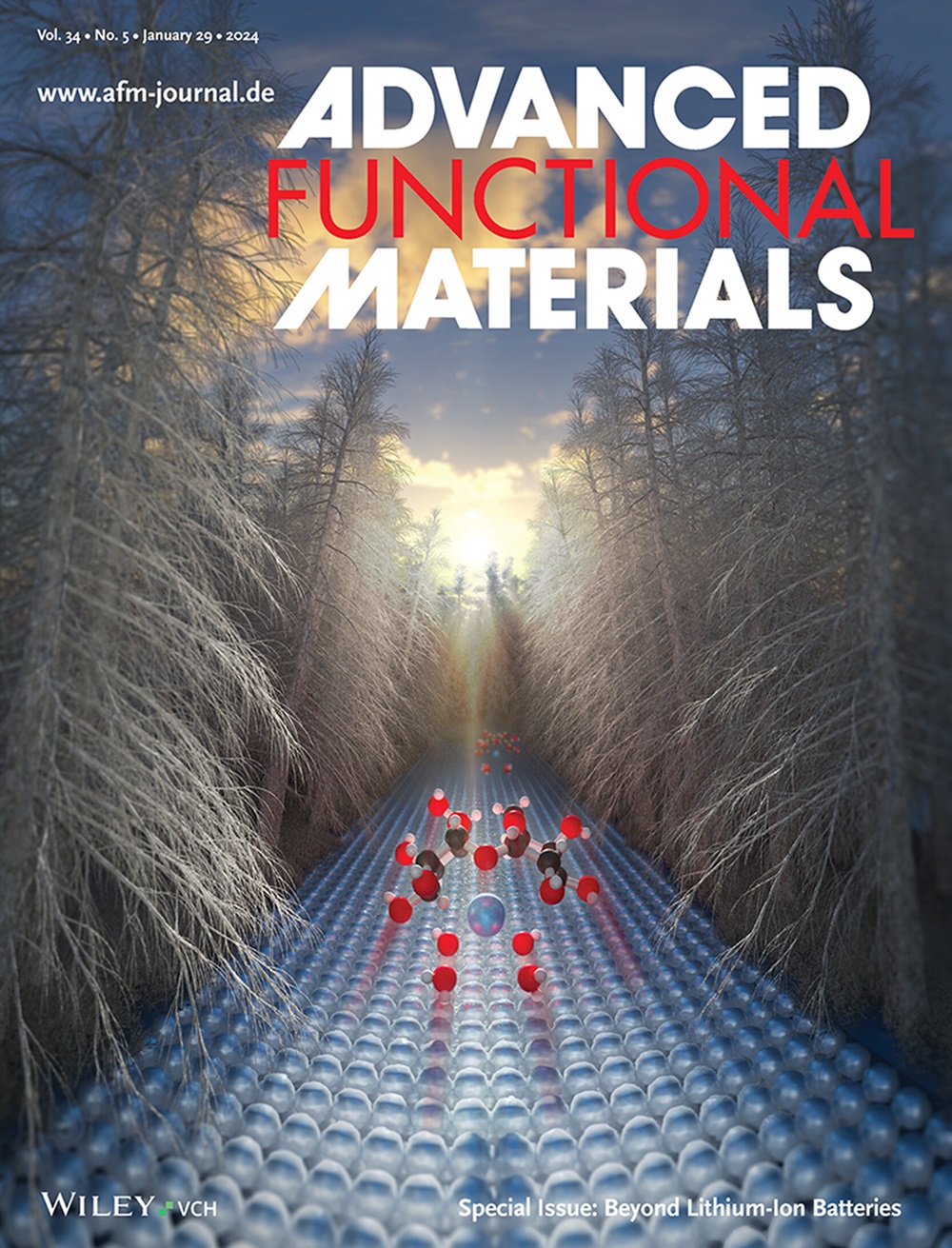通过短期和远程电子调制稳定Ni单原子上的*COOH增强CO2电还原
IF 18.5
1区 材料科学
Q1 CHEMISTRY, MULTIDISCIPLINARY
引用次数: 0
摘要
镍单原子(SAs)在电催化二氧化碳还原反应(CO2RR)中具有活性,但其性能在实际应用中仍有待进一步提高。本文报告了一种 "短程和长程调制 "策略,通过在掺杂 N 的碳载体(Ni-P1N3/NiNPs@NC)上构建与 N、P 配位 Ni SAs 集成的 Ni 纳米颗粒(NPs)来协同调制 Ni SAs 的电子结构。实验和理论计算表明,Ni-P 配位的短程调制和 Ni NPs 的长程调制共同增强了 Ni SAs 周围的电子定位,从而提高了关键 *COOH 中间体的结合强度。这就通过降低能垒改善了 Ni SA 的 CO2RR 性能。与可逆氢电极(vs RHE)相比,Ni-P1N3/NiNPs@NC 在 -0.5 至 -1.1 V 的宽电位范围内对 CO 的法拉第效率超过 99.0%,在 -1.1 V 与 RHE 相比时,CO 的最高部分电流密度为 -544 mA cm-2。本文章由计算机程序翻译,如有差异,请以英文原文为准。

Enhanced CO2 Electroreduction by Stabilizing *COOH on Ni Single Atoms via Short- and Long-Range Electronic Modulation
Ni single-atoms (SAs) are active for electrocatalytic CO2 reduction reaction (CO2RR) to CO, but their performance still needs to be further improved for practical implementation. Herein, a strategy of “short- and long-range modulation” is reported to synergistically modulate the electronic structure of Ni SAs by constructing Ni nanoparticles (NPs) integrated with N, P-coordinated Ni SAs on N-doped carbon supports (Ni-P1N3/NiNPs@NC). Experiments and theoretical calculations reveal that both the short-range modulation involving Ni–P coordination and the long-range modulation by Ni NPs collectively enhance the electron localization around Ni SAs, thus increasing the binding strength for the key *COOH intermediate. This results in an improved CO2RR performance of Ni SAs by lowering the energy barrier. Ni-P1N3/NiNPs@NC exhibits a Faradaic efficiency for CO exceeding 99.0% across a wide potential range from −0.5 to −1.1 V versus reversible hydrogen electrode (vs RHE), with the highest partial current density for CO of −544 mA cm−2 at −1.1 V vs RHE.
求助全文
通过发布文献求助,成功后即可免费获取论文全文。
去求助
来源期刊

Advanced Functional Materials
工程技术-材料科学:综合
CiteScore
29.50
自引率
4.20%
发文量
2086
审稿时长
2.1 months
期刊介绍:
Firmly established as a top-tier materials science journal, Advanced Functional Materials reports breakthrough research in all aspects of materials science, including nanotechnology, chemistry, physics, and biology every week.
Advanced Functional Materials is known for its rapid and fair peer review, quality content, and high impact, making it the first choice of the international materials science community.
 求助内容:
求助内容: 应助结果提醒方式:
应助结果提醒方式:


